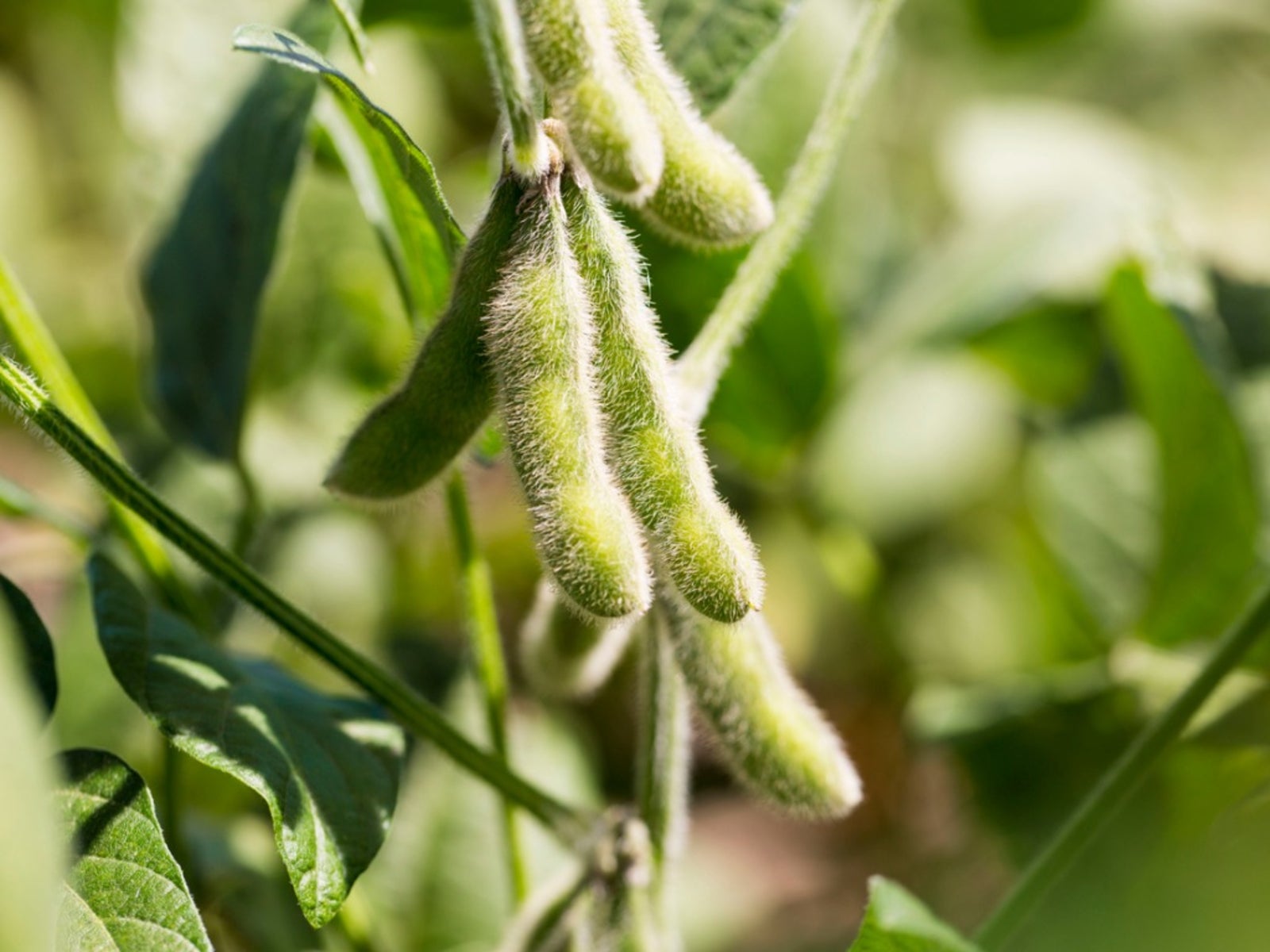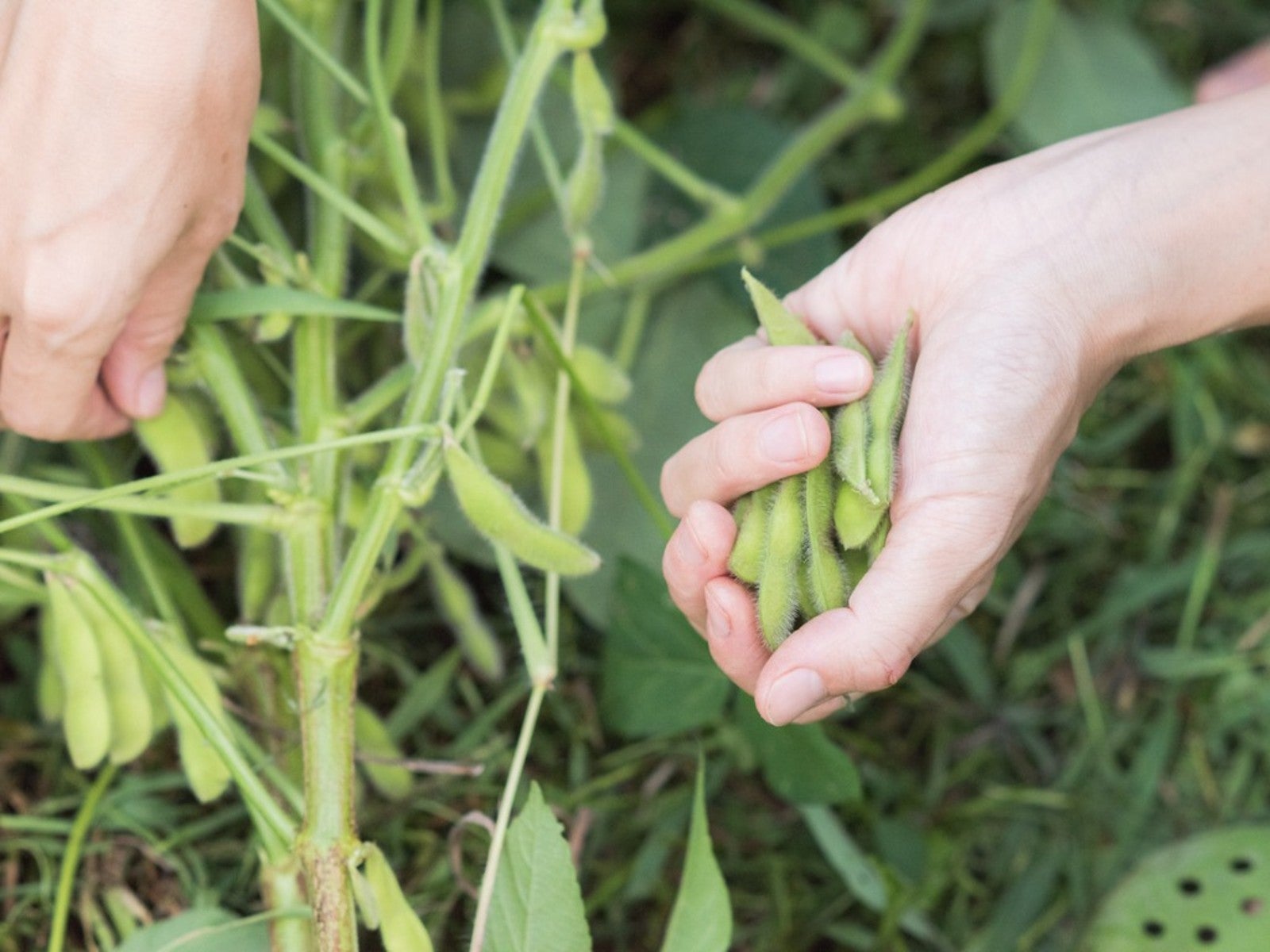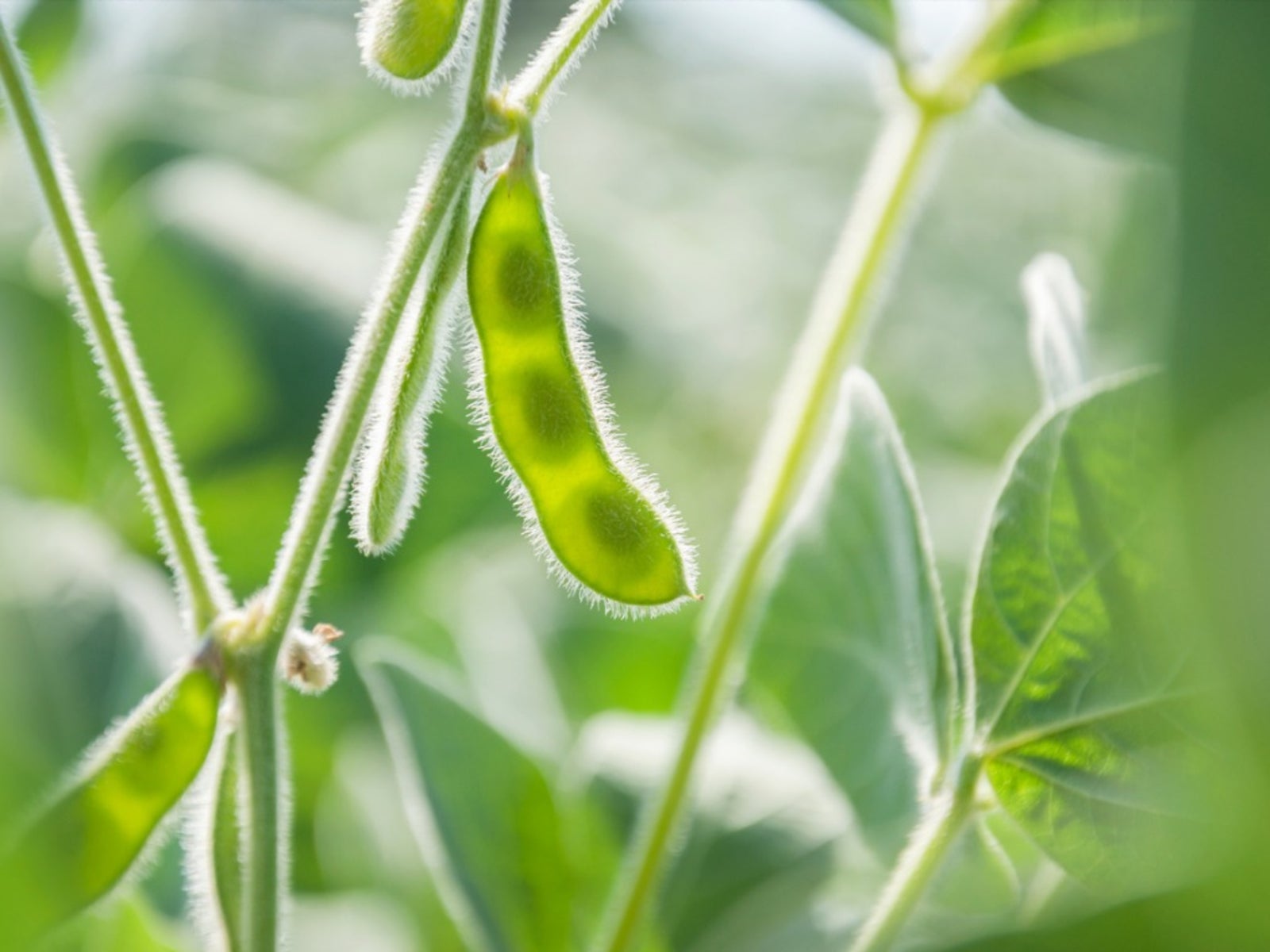Growing Soybeans: Information On Soybeans In The Garden

An ancient crop of the Orient, soybeans (Glycine max 'Edamame') are just beginning to become an established staple of the Western world. While it's not the most commonly planted crop in home gardens, many people are taking to growing soybeans in fields and reaping in the health benefits these crops provide.
Information on Soybeans
Soybean plants have been harvested for more than 5,000 years, but only in the last 250 years or so have Westerners become aware of their enormous nutritional benefits. Wild soybean plants can still be found in China and are beginning to find a place in gardens throughout Asia, Europe, and the Americas. Soja max, the Latin nomenclature comes from the Chinese word 'sou,' which is derived from the word 'soi' or soy. However, soybean plants are so revered in the Orient that there are over 50 names for this extremely important crop! Soy bean plants have been written about as early as the old Chinese ‘Materia Medica' circa 2900-2800 B.C. However, it doesn't appear in any European records until A.D. 1712, after its discovery by a German explorer in Japan during the years 1691 and 1692. Soybean plant history in the United States is disputable, but certainly by 1804 the plant had been introduced in eastern areas of the U.S. and more fully after an 1854 Japanese expedition by a Commodore Perry. Still, the popularity of soybeans in the Americas was limited to its use as a field crop even as recently as the 1900's.
How to Grow Soybeans
Soybean plants are fairly easy to grow-- about as easy as bush beans and planted much the same way. Growing soybeans can occur when soil temperatures are 50 degrees F. (10 C.) or so, but more ideally at 77 degrees F. (25 C.). When growing soybeans, don't rush planting as cold soil temperatures will keep the seed from germinating and stagger planting times for a continuous harvest. Soybean plants at maturation are quite large, 2 feet (61 cm.) tall, so when planting soybeans, be aware that they are not a crop to attempt in a small garden space. Make rows 2 to 2 ½ feet (61-76 cm.) apart in the garden with 2 to 3 inches (5-8 cm.) between plants when planting soybeans. Sow seeds 1 inch (2.5 cm.) deep and 2 inches (5 cm.) apart. Be patient; germination and maturation periods for soybeans are longer than most other crops.
Growing Soybean Problems
- Don't sow soybean seeds when the field or garden is overly wet, as cyst nematode and sudden death syndrome may affect the growth potential.
- Low soil temperatures will prevent germination of the soybean plant or cause root rotting pathogens to flourish.
- In addition, planting soybeans too early may also contribute to high populations of bean leaf beetle infestations.
Harvesting Soybeans
Soybean plants are harvested when the pods (edamame) are still an immature green, prior to any yellowing of the pod. Once the pod turns yellow, the quality and flavor of the soybean is compromised. Pick by hand from the soybean plant, or pull the entire plant from the soil and then remove pods.
Gardening tips, videos, info and more delivered right to your inbox!
Sign up for the Gardening Know How newsletter today and receive a free copy of our e-book "How to Grow Delicious Tomatoes".

Amy Grant has been gardening for 30 years and writing for 15. A professional chef and caterer, Amy's area of expertise is culinary gardening.
-
 8 Noteworthy Native Azaleas Every Gardener Should Know – And Grow!
8 Noteworthy Native Azaleas Every Gardener Should Know – And Grow!Native azaleas offer brilliant blooms in a range of colors and sizes. Here are a few favorites to get inspired and start working on a native shade garden!
-
 Growing Climbing Roses: How To Create Elegant Displays With Maximum Blooms
Growing Climbing Roses: How To Create Elegant Displays With Maximum BloomsMaster the art of growing stunning climbing roses with this essential guide to creating vibrant, fragrant walls and structures all summer long.
-
 How And When To Harvest Soybeans
How And When To Harvest SoybeansEdamame, or edible soybeans, are a delicious and nutritious addition to a healthy diet. Learn how and when to harvest this Japanese delicacy.
-
 Edamame Plant Companions: What To Plant With Edamame In The Garden
Edamame Plant Companions: What To Plant With Edamame In The GardenWhether you just plain enjoy the flavor or want to eat healthier, there's no time like the present to grow your own edamame. Before you plant your edamame, click here to find out what edamame plant companions can facilitate the plant's growth and production.
-
 Soybean Rust Disease: Learn About Soybean Rust Control In Gardens
Soybean Rust Disease: Learn About Soybean Rust Control In GardensThere is a disease that terrorized the soybean growing community! Today, it is important for growers to identify what soybean rust is, soybean rust symptoms and how to control soybean rust. This article should help with that.